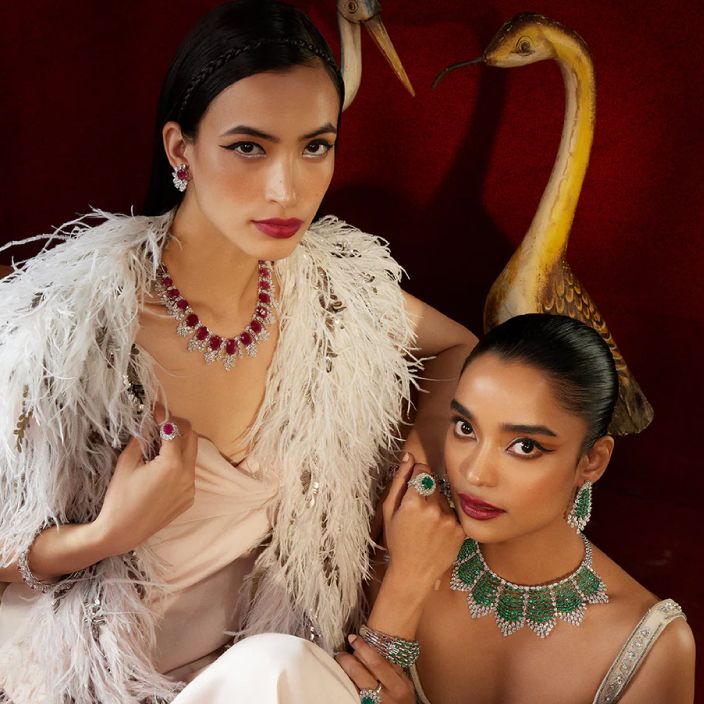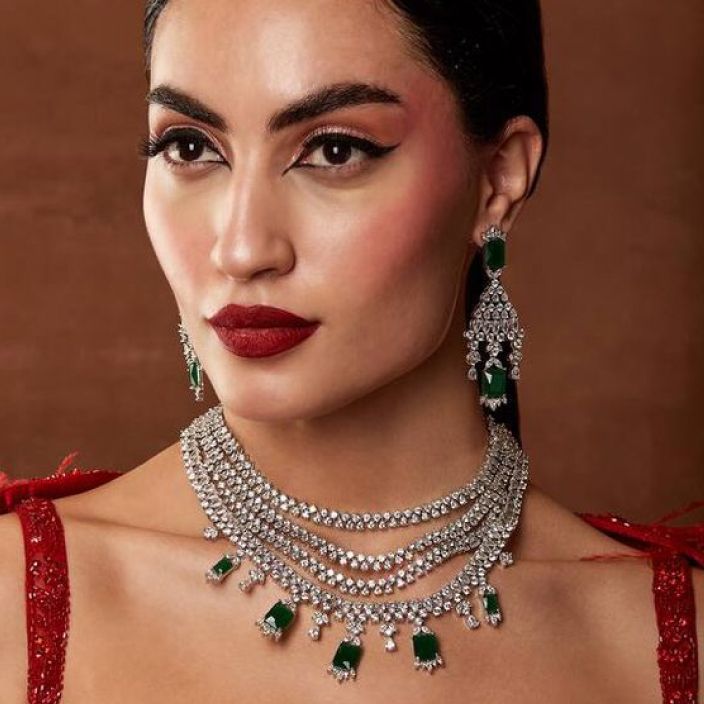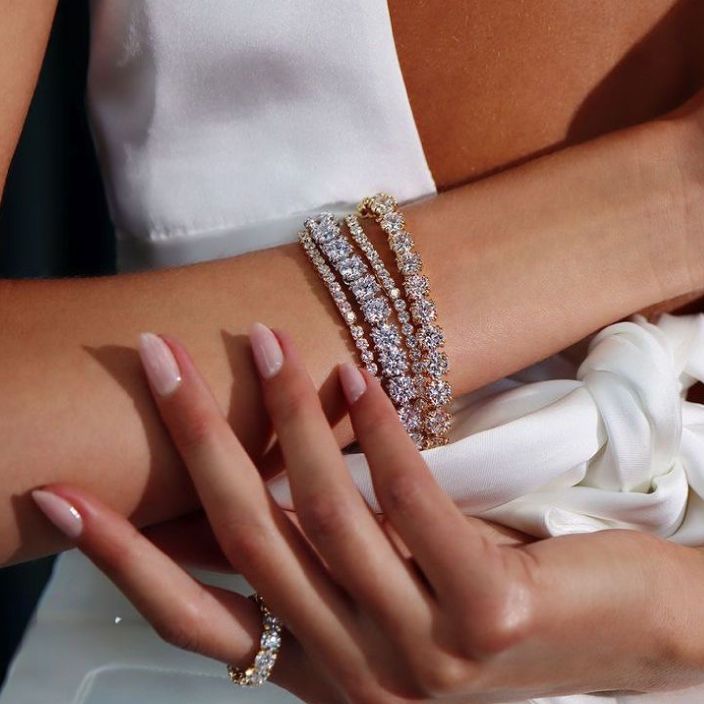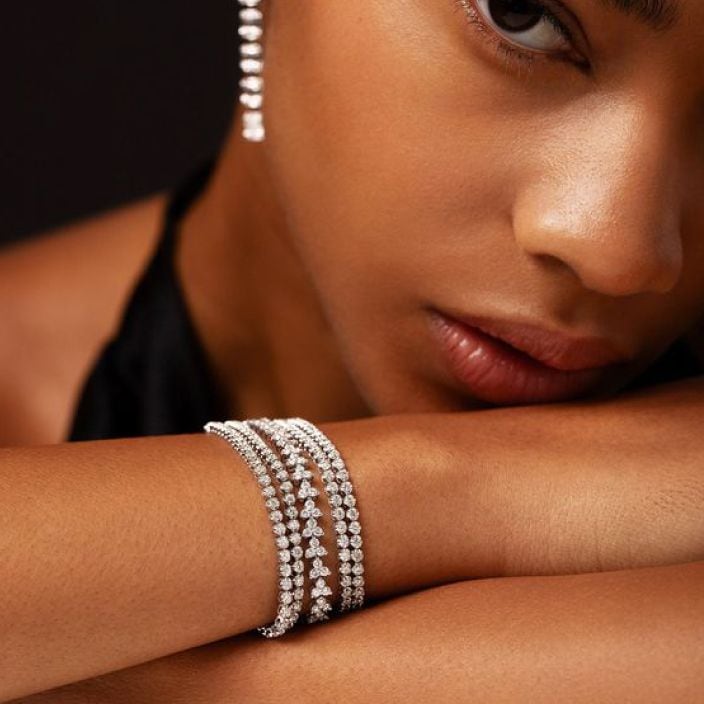For best prices and early deliveries, WhatsApp us at. 918488070070
Zircon Jewellery
For decades, colourless Zircons called Matara or Matura diamonds have been a favourite substitute for natural diamonds. Set in jewellery, these Zircons are known for their brilliance, dispersion, and fire. Zircon jewellery meaning lies in its versatility, with Both colourless Zircons and coloured Zircons in hues of blue, green, yellow, orange, brown, red, and reddish brown have decorated necklaces, earrings, bangles, and bracelets. Natural high Zircons, unaffected by radioactivity, are sometimes heated at 800 to 1000 degrees centigrade to enrich or transform their colour, increase transparency, and imitate the optic properties of diamonds. Mostly brown Zircons, when heated, transform into colourless or blue Zircons. These colourless Zircons are called Sparklites or Matara Diamonds, and the blue Zircons are called Starlites or Stremlites. The other trade names given to Zircons are Jacinth for yellow to orange, Hyacinth for red to reddish-brown, Ligure for green, and Cinnamon for brown. Today, the most beautiful Zircons are mined in Australia, Cambodia, Madagascar, Canada, Ukraine, Myanmar, Sri Lanka, and Thailand, with Australia producing 37% of the world's total Zircons supply. Zircon is a naturally occurring mineral of the nesosilicate group, dating back 4.4 billion years. For centuries, it has captivated jewellery enthusiasts. Most European and American jewellers use colourless, white, blue, and golden-yellow zircons to maximise their optical effects. The colourless, clear, and white variation of the Zircon that closely resembles the diamond has served as an affordable option for diamond jewellery. Besides being considered an ideal natural substitute for diamonds, Zircons, with their wide range of colours, lustre, and durability, have been treasured since ancient times. This semi-precious gemstone is sometimes even mistaken for Cubic Zirconia, a synthetic stone.
Tracing the Roots
The name Zircon has a long history. It is said to have originated by combining two Arabic words, Zar meaning gold and Zum meaning colour. Also, while the Persians called the stone Zargun, meaning gold-hued or gold-coloured, the Germans called them Zirkons. Today, we all know them as Zircons in English. The Greeks were the first to introduce Zircons in the 6th century AD. At the beginning of the Middle Ages, interpreted as the start of the 13th century, people used Zircons as amulets to induce sleep and bring prosperity to the wearer.
The history of Zircon dates back to the 14th century, 14th century, after the Zircons were faceted, jewellery pieces like broaches, necklaces, rings, and earrings carried Zircons. During the Victorian Era, blue Zircons were used extensively in estate jewellery and the grey Zircons in mourning jewellery. Also, colourless Zircons, because of their exceptional brilliance and affordability, were used to simulate diamonds before the discovery of South African diamond mines in 1896. Later, by the 1920s, heat-treated Zircons were everywhere.
The Making of Zircon Jewellery
The first step in making Zircon jewellery is finalising the artist's sketch or computer-aided design (CAD) according to the intended design and carefully arranging or laying the Zircons on a board to visualise the design. Next, a 3D printer creates a model of the necklace, bangle, earring, or ring. The highly detailed model allows you to make necessary adjustments before proceeding to the manufacturing stage.
Based on the 3D prototype, the main step in the manufacturing process is to sculpt a wax model called a Wax Tree. The kaarigar, or craftsman, carves the design from carving wax, attaching it to sprues or tiny channels that allow molten metal to flow. The sprues join the wax model to the wax tree, which is a cylindrical wax rod. Once the wax model is attached, the wax tree is ready to be used in the casting process. At this stage, the wax tree is filled with molten metal and placed in a cylinder known as a flask. Once the mould is set and baked, the kaarigar immerses it in cold water.
The gold metal cast then goes through the grinding process to remove any superfluous material or rough edges from the metal before setting the Zircons. The kaarigar may use different types of settings, such as prong setting, pave setting, bar setting, bezel setting, channel setting, or cluster setting. Once the Zircons are embedded, the pieces are assembled, polished, and buffed for a shiny and smooth look.
The last and most crucial step is quality control. The jeweller checks for loose or broken Zircons, scratches, or spots on the metal. Once quality control is complete, the Zircon necklace, earring, bangle, or ring is labelled, documented, and ready for sale.
Cultural Significance
Throughout history, Zircon jewellery has been revered for its aesthetic value and symbolic meanings. People born in September wear a Zircon as their birthstone, while those born in December use a blue Zircon as their alternative birthstone.
In the Middle Ages, spanning a thousand years and ending roughly between 1400 and 1450, Zircons gained popularity as talismans. The Zircon also has astrological and spiritual benefits. In Hindu astrology, a Zircon is used to enhance the positive effects of the planet Venus, bringing prosperity and wisdom to the wearer. Also, poet Kalidasa, in his epic Meghaduta, described Zircon gems in the mythological Kalpa Tree, Kalpavriksha or Kalpataru. In Hinduism, this wish-fulfilling divine tree, a symbolic offering to the Gods, was also described as the glowing mass of precious stones with leaves made of green Zircons.
Also, while the Chinese use Zircons in various spiritual ceremonies, the Arab travellers carry Zircons to keep them safe during their journey.
Today, Zircon is used for its aesthetic value and as a gemstone in astrology. It is a captivating gem with rich historical significance and cultural symbolism. Zircon necklaces, earrings, bangles, bracelets, and rings have found a place in fine jewellery.
Evolution & Adaption
Zircon jewellery has existed from ancient times, the the Middle Ages, the Renaissance era, and the Age of Revolutions until the 21st century. It has come a long way from symbolic significance to sustainability and faceted to fashionable.
Today, Zircon jewellery in white and blue is a favourite among contemporary jewellery designers and jewellery collectors. Affordable Zircon necklaces, earrings, bangles, bracelets, and rings have evolved in design and manufacturing methods, continuing their close resemblance to diamond jewellery and more.




